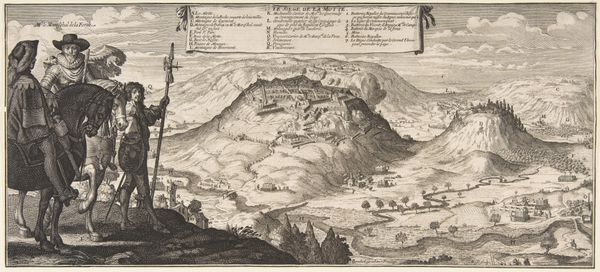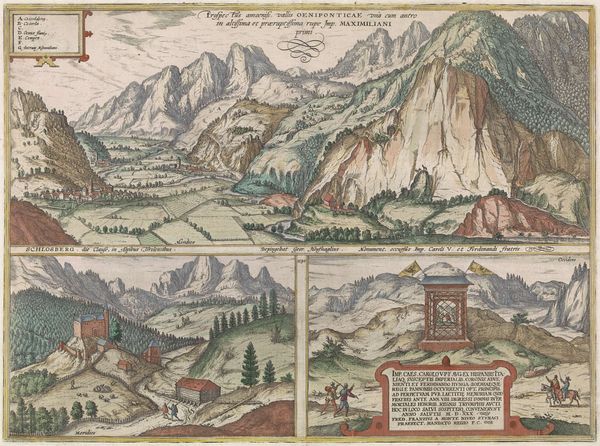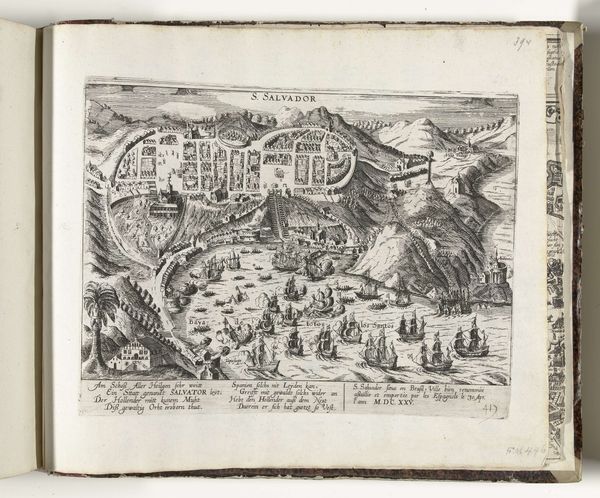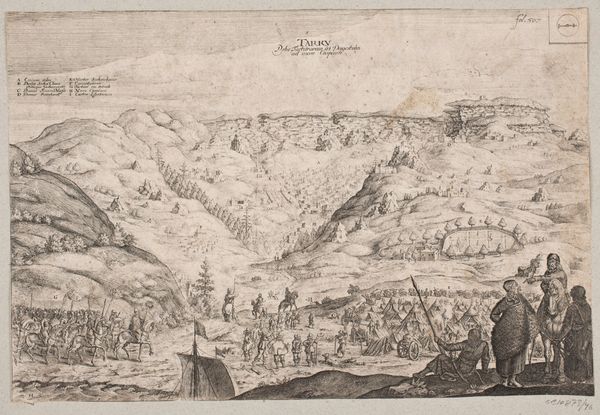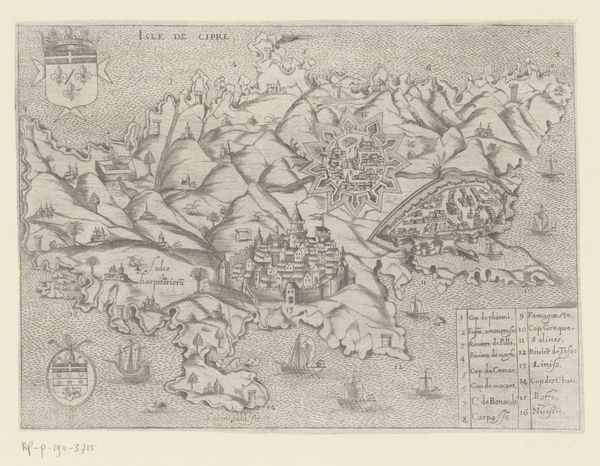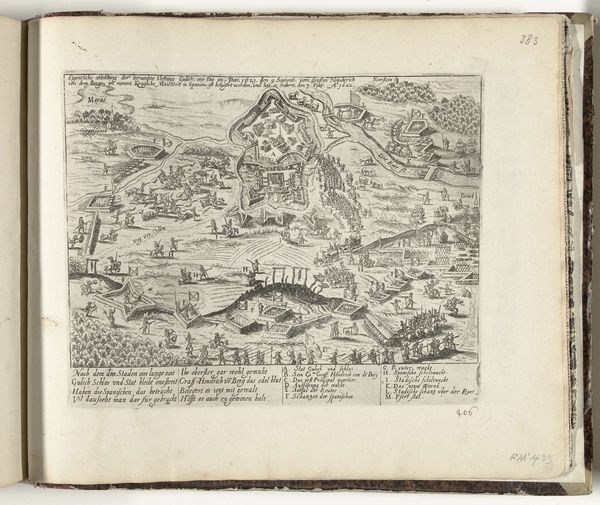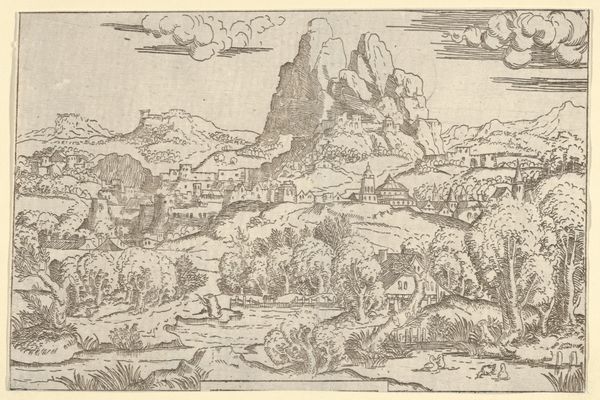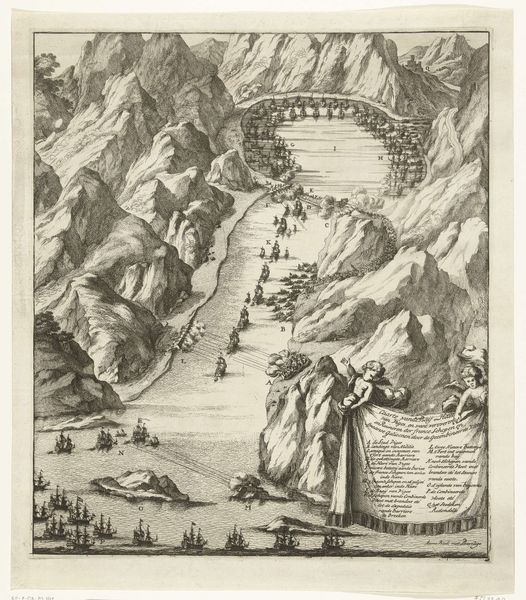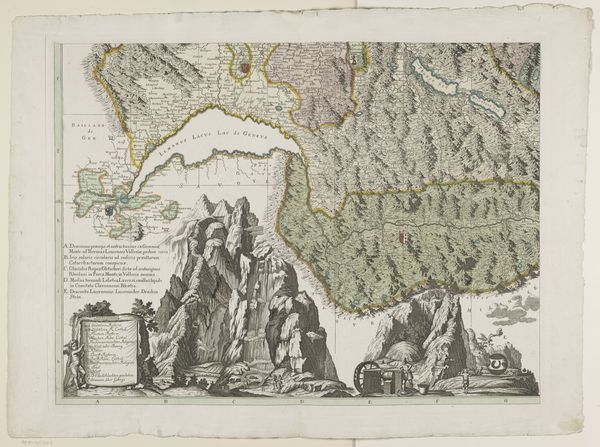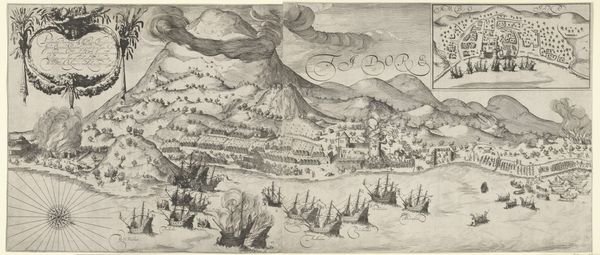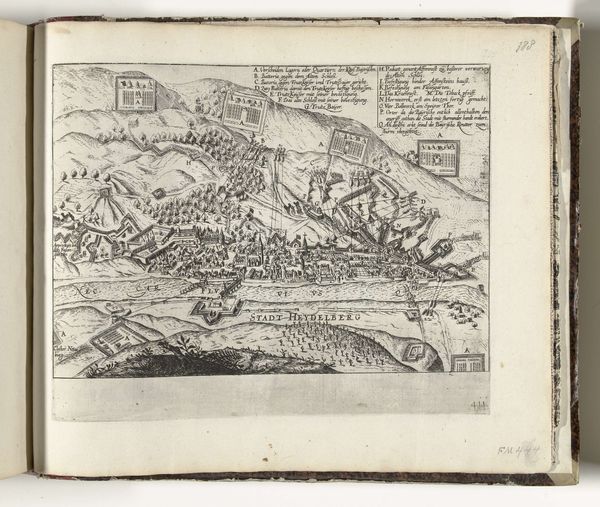
The Inn Valley from the series Civitates Orbis Terrarum, vol. V, plate 59 1590
0:00
0:00
drawing, graphic-art, print, etching, engraving
#
drawing
#
graphic-art
#
medieval
#
pen drawing
# print
#
etching
#
landscape
#
11_renaissance
#
engraving
Dimensions: sheet: 14 15/16 x 20 5/16 in. (38 x 51.6 cm)
Copyright: Public Domain
Curator: At first glance, this piece feels incredibly intricate, almost obsessively detailed. There’s a sense of vastness, yet it’s all rendered in tight, controlled lines. Editor: That’s a great way to put it. We’re looking at “The Inn Valley from the series Civitates Orbis Terrarum, vol. V, plate 59.” It's an engraving dating back to 1590, part of a larger project documenting cities and landscapes across Europe. The artist is Simon Novellanus. Curator: It definitely has that meticulous cartographic quality characteristic of the period. The rendering of the mountains, especially—it evokes a sense of enduring strength, of nature’s imposing power over the tiny figures below. There is an emblematic feel. It feels less about individual emotion and more about the lasting monumentality. Editor: Notice the four distinct panels? Each offers a different perspective. In Renaissance thought, different views of the same place offered deeper symbolic understanding and a connection to antiquity. Curator: Absolutely. The top panel establishes an almost panoramic view. Those cultivated fields in the middle distance bring to mind ideas of dominion and control over the landscape, very telling of Renaissance humanism and that drive to master one's environment. Editor: I see the symbolic importance too. Take, for instance, that central structure in the lower right panel—almost like a small cage. It begs interpretation in the context of imprisonment, or protection. Curator: Possibly. It could also symbolize the limitations of human knowledge or experience in contrast to the expansive, unknowable nature surrounding it. Medieval art is all about allegory. Editor: Agreed. The consistent style, however, reinforces its cohesiveness as a larger composition rather than discrete images, tying these views together despite their different perspectives. A complex symbolic encoding for its time. Curator: This work really reminds us of the intersection of cartography, art, and symbolism in the late Renaissance. A window into how they understood the world—literally and figuratively. Editor: And a striking demonstration of the enduring power of meticulously rendered line work to convey both physical space and cultural meaning across centuries.
Comments
No comments
Be the first to comment and join the conversation on the ultimate creative platform.
